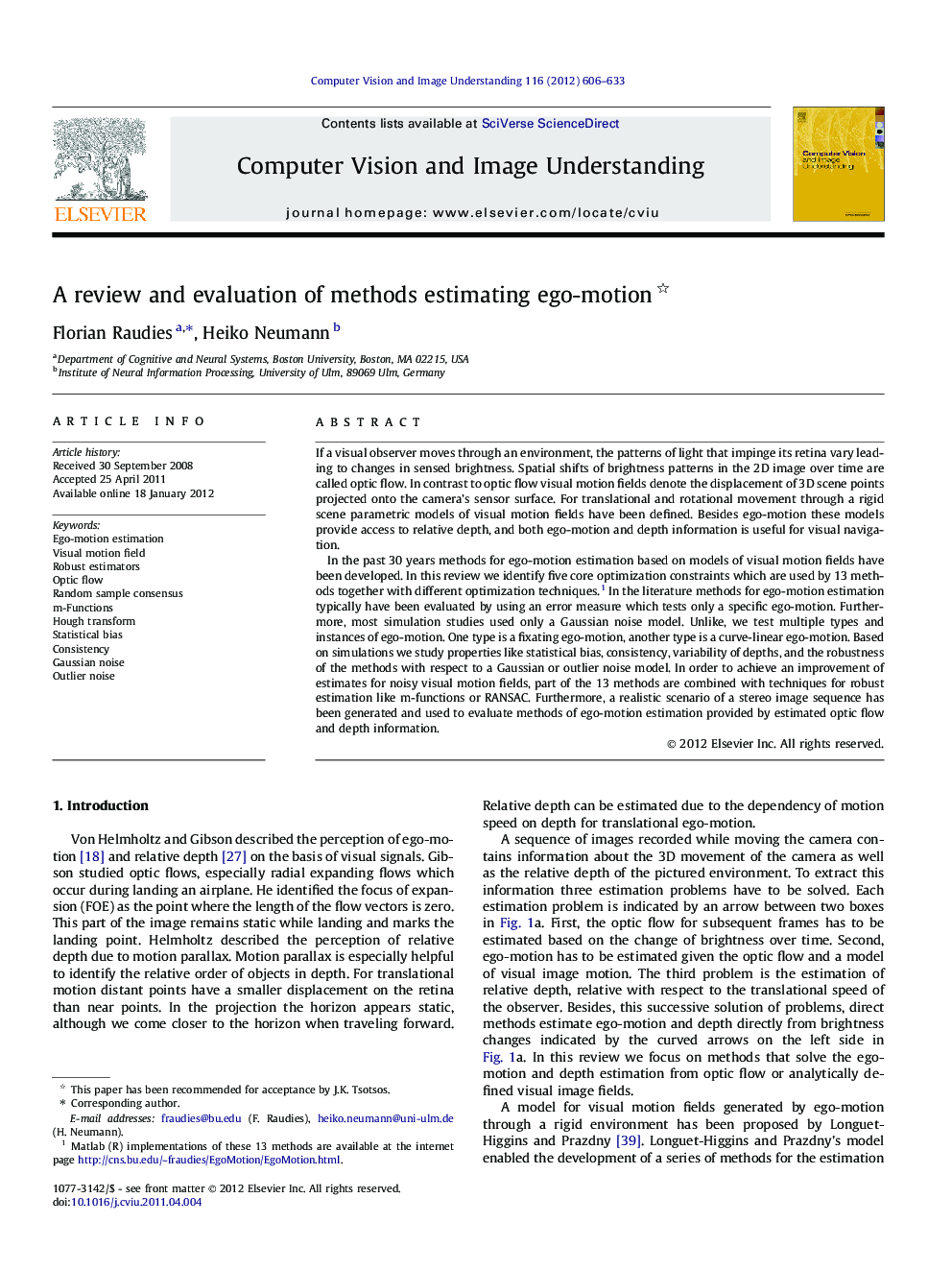| کد مقاله | کد نشریه | سال انتشار | مقاله انگلیسی | نسخه تمام متن |
|---|---|---|---|---|
| 525733 | 869019 | 2012 | 28 صفحه PDF | دانلود رایگان |

If a visual observer moves through an environment, the patterns of light that impinge its retina vary leading to changes in sensed brightness. Spatial shifts of brightness patterns in the 2D image over time are called optic flow. In contrast to optic flow visual motion fields denote the displacement of 3D scene points projected onto the camera’s sensor surface. For translational and rotational movement through a rigid scene parametric models of visual motion fields have been defined. Besides ego-motion these models provide access to relative depth, and both ego-motion and depth information is useful for visual navigation.In the past 30 years methods for ego-motion estimation based on models of visual motion fields have been developed. In this review we identify five core optimization constraints which are used by 13 methods together with different optimization techniques.1 In the literature methods for ego-motion estimation typically have been evaluated by using an error measure which tests only a specific ego-motion. Furthermore, most simulation studies used only a Gaussian noise model. Unlike, we test multiple types and instances of ego-motion. One type is a fixating ego-motion, another type is a curve-linear ego-motion. Based on simulations we study properties like statistical bias, consistency, variability of depths, and the robustness of the methods with respect to a Gaussian or outlier noise model. In order to achieve an improvement of estimates for noisy visual motion fields, part of the 13 methods are combined with techniques for robust estimation like m-functions or RANSAC. Furthermore, a realistic scenario of a stereo image sequence has been generated and used to evaluate methods of ego-motion estimation provided by estimated optic flow and depth information.
► Thirteen methods for ego-motion estimation are reviewed.
► Estimation errors are analyzed for ego-motions in different environments.
► For an increasing depth range the estimation error for translation decreases.
► By using ground-truth depths the estimation error can be reduced.
► Robustness to outlier noise is achieved with m-functions or random sample consensus.
Journal: Computer Vision and Image Understanding - Volume 116, Issue 5, May 2012, Pages 606–633